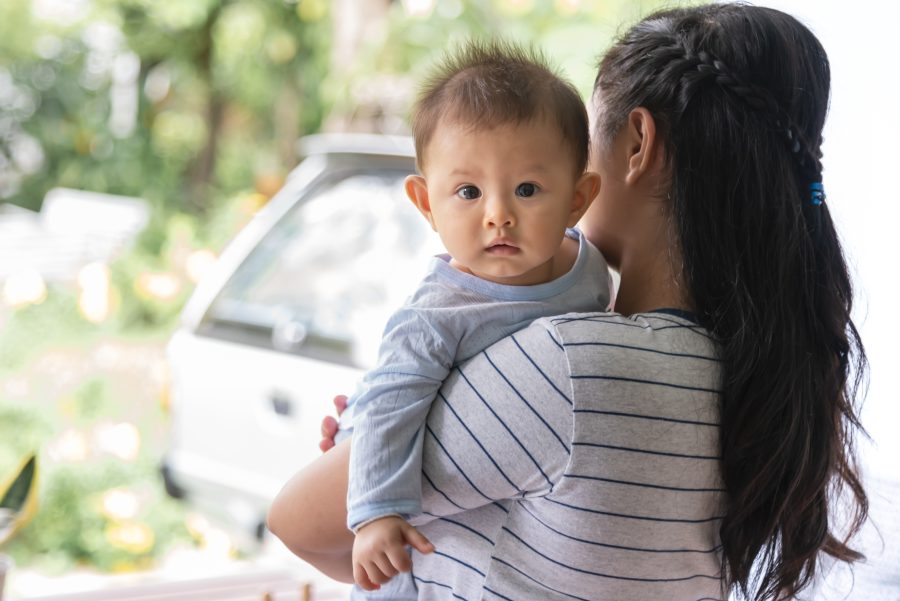 Raise your hand if you’ve ever seen a post like this. Usually, it’s something that goes viral from a mom’s own Facebook account. A woman recounted her supposedly terrifying experience while shopping somewhere with her child that we all go on a regular basis — Target, Walmart, CVS, IKEA, wherever — and noticed a man behaving oddly. Usually, he’s walking up and down the same aisles she is, and staring intently at her and her child. Sometimes, there might be a few female accomplices chatting her up, too. The mom only narrowly manages to escape by alerting an employee to the situation, which is clearly human trafficking in action and is told by police that this was almost surely an attempt to kidnap her or her child. Nothing actually happened in any of these scenarios, but they spread like wildfire, with countless moms breathlessly issuing warnings to always remain alert when shopping, because apparently, human traffickers love hanging out at Target, just waiting to snatch kids away from their mothers in front of crowds of people and in full view of security cameras.
Raise your hand if you’ve ever seen a post like this. Usually, it’s something that goes viral from a mom’s own Facebook account. A woman recounted her supposedly terrifying experience while shopping somewhere with her child that we all go on a regular basis — Target, Walmart, CVS, IKEA, wherever — and noticed a man behaving oddly. Usually, he’s walking up and down the same aisles she is, and staring intently at her and her child. Sometimes, there might be a few female accomplices chatting her up, too. The mom only narrowly manages to escape by alerting an employee to the situation, which is clearly human trafficking in action and is told by police that this was almost surely an attempt to kidnap her or her child. Nothing actually happened in any of these scenarios, but they spread like wildfire, with countless moms breathlessly issuing warnings to always remain alert when shopping, because apparently, human traffickers love hanging out at Target, just waiting to snatch kids away from their mothers in front of crowds of people and in full view of security cameras.
If you’ve ever shared these posts, you need to stop. Why? Because they’re almost certainly fake — and they also blind people to what the real signs of human trafficking are.
Right here on the First Coast, a shocking arrest was made for the kinds of situations that often lead to trafficking. Roger LaRue, a 49-year-old man who lives in St. Johns County, was caught trying to have explicit conversations with who he thought was a 14-year-old girl. Thankfully, in this case, it was an undercover police officer. Yet LaRue’s case is a much closer representation of how traffickers work to get close to their victims — and many parents remain, sadly, clueless.
When parents think of human traffickers abducting their children, they think of something along the lines of the viral posts on social media. Like something out of the movie Taken, they envision their precious child being violently snatched away, even in a public place, and dragged kicking and screaming into slavery. Yet this isn’t how trafficking works at all. As experts have pointed out, the fake stories are keeping parents from knowing what to actually look out for.
Lara Powers, who has been on the frontlines of the battle against human trafficking, wrote about how these scenarios of supposed “close calls” are not only fake but are harmful. “I have never seen, read or heard about a real sex-trafficking situation in which a child was abducted by traffickers in broad daylight at a busy store under a mother’s watchful eye. It’s just not the way it works,” she explained in her op-ed for the Los Angeles Times. “Traffickers tend to coerce their victims because hauling them off is too risky. Their tactics generally aren’t the kind that leave physical bruises. Victims are recruited, manipulated, made dependent. The psychological and emotional ties they establish are highly effective. Trafficked children are unlikely to attempt escape. They often won’t snitch on their traffickers even if law enforcement approaches them.”
Kids who are actually at high risk of being trafficked aren’t the ones walking alongside their moms at Walmart. It’s kids who are in foster care, the ones who are homeless or maybe ran away. LGBTQ kids are at higher risk, too, often because they find themselves kicked out of their homes after coming out to their parents, and are desperate for shelter. And in other cases, it’s teenage girls who are convinced by a male — maybe just a few years older than she is, maybe much older than she is — that they are in love. Children of color and children with disabilities are also especially vulnerable.
Instead of stalking people in Target, traffickers are much more likely to use the internet to find their victims. LaRue was caught using the Whisper app. Traffickers and abusers will use countless apps, chat rooms, social media, and even online games. to find their victims and slowly, surely work on them over time. There are three steps to the process. First, the trafficker scouts the victim. Once they’ve found them, they groom them, and then finally, they trap them.
So what are the actual warning signs that your child might be a victim of potential trafficking?
- Becomes secretive and obsessive about being online
- Gets angry when they aren’t allowed to go online
- Withdraws from family and friends
- Begins receiving mail, gifts, and packages from people you do not know
- Begins calling people you do not know
So next time you see a hysterical post from a random woman claiming to have thwarted potential trafficking, ignore it. It’s a fake story, designed to get them attention and — more likely — lots of likes and shares. The real stories are much more nefarious, and harder to spot. It’s people like Roger LaRue, operating secretly in cyberspace to catch their prey behind the scenes, while publicly presenting a facade of a dedicated family man. It’s vital that parents understand what human trafficking actually is, and what the warning signs really are. Your child is not going to be snatched away from a busy public place. And while being alert in every situation is useful, sharing these stories does much more harm than good, because it misrepresents trafficking. Instead of remaining aware of the dangers of real trafficking, these stories create a false bogeyman to be scared of, all while parents stay blissfully ignorant of the signs they should be looking out for. Mom intuition is a great thing, but it doesn’t override the facts. And the simple fact is, your child is not going to be kidnapped from IKEA. The dangers you should be worrying about are far closer to home.

















I appreciate your opinion of this issue and agree that this is very certainly the case for older children. However I disagree with you on this issue in view of younger children. I have heard of 2 confirmed cases( good friends of mine) in which their children were almost snatched. One at a playground and another at a theme park. Both cases were not at all miscommunication nor could the events be interpreted in any other way.
I get what you’re saying and you make good points, but it doesn’t mean these situations didn’t happen or the people involved didn’t feel safe. Something might have been going on–just maybe not a trafficking situation, but still a threat or possible scam of some kind.